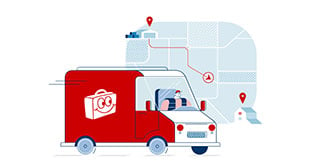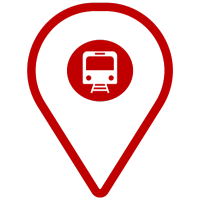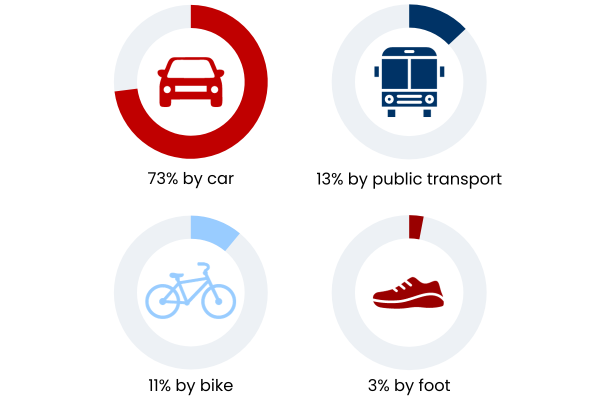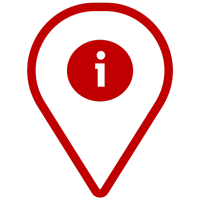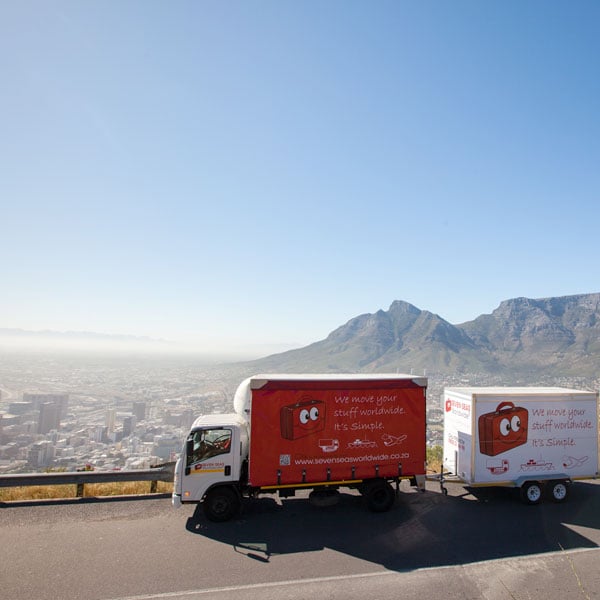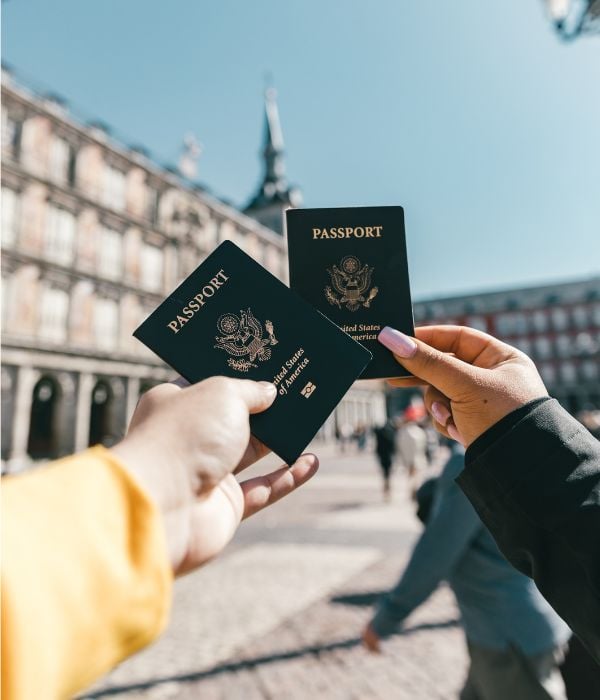Before packing, check this list of items prohibited from entering a particular country or region.
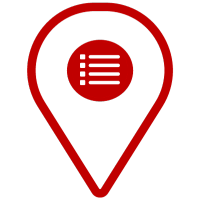
Table of contents

How to move to the USA
The USA is an alluring destination for expats looking to start a new and exciting life abroad. Whether you settle in a laid-back sunshine state like Florida or California or opt for the big-city hustle and bustle of New York or Chicago, America is so vast and varied it's like having fifty countries to explore in one.
After a decrease in immigration during the COVID-19 pandemic, expats are once again flocking to America. In 2022, 46 million foreign-born people made their home in the US — 1 million more than in 2021. Expats now make up 15.3% of the US population (source: World Population Review).
From applying for a visa and finding a home to shipping to USA and settling into the community, our in-depth guide to moving to the States covers it all and more. So, why not get your American dream started today?
How many immigrants are in the US?
There are
46.2M immigrants in the US
(Source: World Population Review)
Things to know when moving to USA
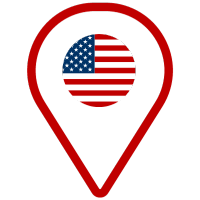
Quick facts about the USA
| States | 50 |
| Capital | Washington, D.C. |
| Population | 333.3M |
| Most populated city | New York City |
| Official languages | None, English (de facto) |
| Area | 3.8M mi² (9.8M km²) - 3rd largest in the world |
| Currency | U.S. Dollar (USD) ($) |
| Form of government | Constitution-based federal republic |
| GDP (total) | $26.9T - 2nd in the world |
| GDP (per capita) | $76,399 - 8th in the world |
| Human Development Index (HDI) | 0.922 - 21st in the world |
(Sources: holidu.co.uk, reliefweb.int, insidermonkey.com, realestate.usnews.com, businessinsider.com)
Whether you settle in a laid-back sunshine state like Florida or California or opt for the big-city hustle and bustle of New York or Chicago, America is so vast and varied it's like having fifty countries to explore in one!
Time zones in the United States
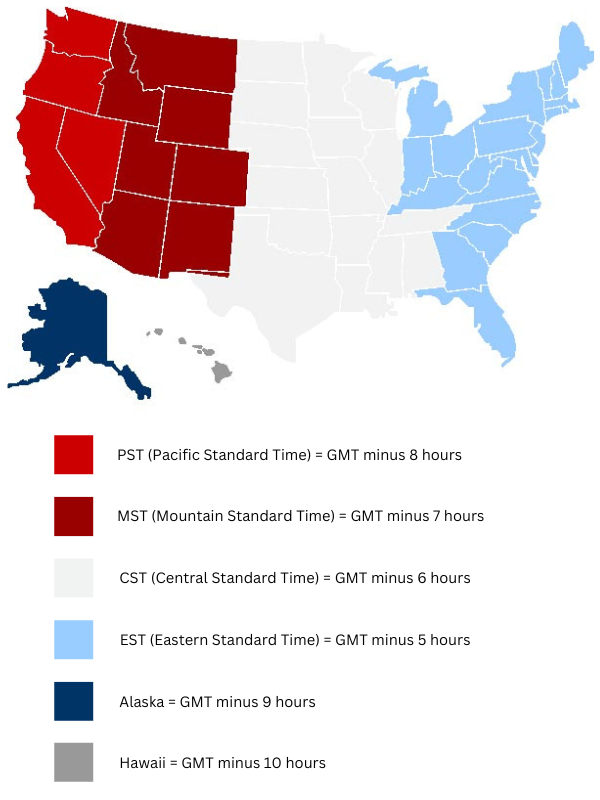
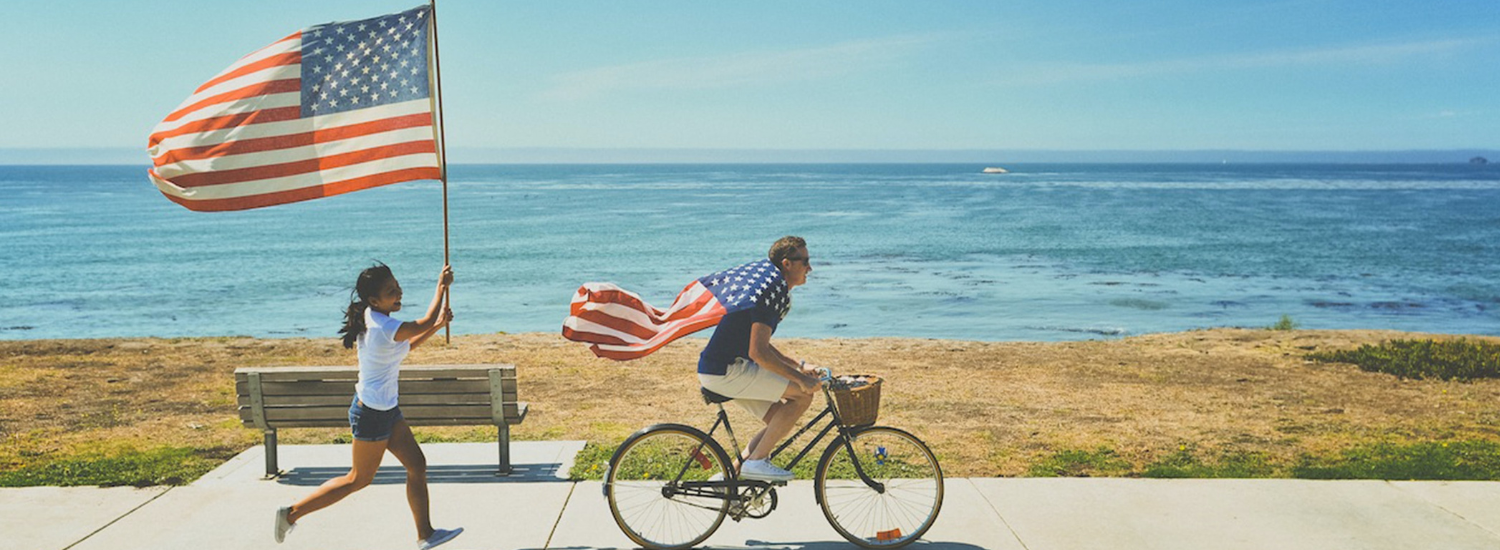
Why do people move to the United States?: Pros and cons
People have been emigrating to the United States for hundreds of years, drawn to the country's vast space and wealth of opportunities. However, due to the multifaceted nature of relocating overseas, there are various positives and negatives you need to consider before making the leap and moving to the United States.

Entrepreneurialism is encouraged:
Thanks to our new digital world, it's never been easier to become your own boss. But starting a business in America could be your chance to transform your side hustle into big bucks. The US has long emphasised innovation and individual enterprise, and there's an array of funding options for startups.
There's a state to suit everyone:
Longing for the cultural vibrancy of New York or dreaming of Miami's eternal sunshine? Perhaps you would prefer the quiet life in a farming town in Wyoming or the sports adrenaline of Utah's snowy slopes? With so many diverse American states, cities and towns, you're sure to find your dream home.
A nation built by immigrants:
"Give me your tired, your poor, your huddled masses yearning to breathe free" - The New Colossus by Emma Lazarus.
The US is a country created by immigrants with a historically welcoming nature. You and your family can learn and grow among a melting pot of cultures. Plus, If you're looking to meet fellow expats to ease the transition, you won't have to look far.
Go big or go home!:
Big ambitions, big burgers, big cars, and really big skyscrapers. American culture doesn't skimp on size, and that includes the country's houses. On average, homes in the US are more spacious than in similarly developed countries, so finding a property with enough space for your family should be relatively easy.

Gun laws can be a culture shock:
While gun laws vary between states, rules on firearm ownership are certainly more relaxed than most expats are used to in their home countries. Ease concerns about gun-related violence by thoroughly researching crime rates in the areas you're considering before moving.
Potentially costly healthcare:
Medical costs in the USA are one of the highest in the world. However, most Americans and expats pay a monthly (or fortnightly) premium for health insurance. The plus side of privatised healthcare is access to the best treatments and shorter waiting times.
A large wealth gap:
In the States, there is a considerable gap between the wealthy and those living in poverty, which has led to social and economic tensions. While the country's GDP does keep rising, the minimum wage has remained static at $7.25 since 2009.
Expensive higher education:
Despite being home to some of the world's most prestigious universities, including Ivy League institutions like Harvard, Yale and Princeton, the price of higher education in the USA can be a financial burden on graduates for many years. The average cost is $36,436 per student per year, including materials and living expenses.
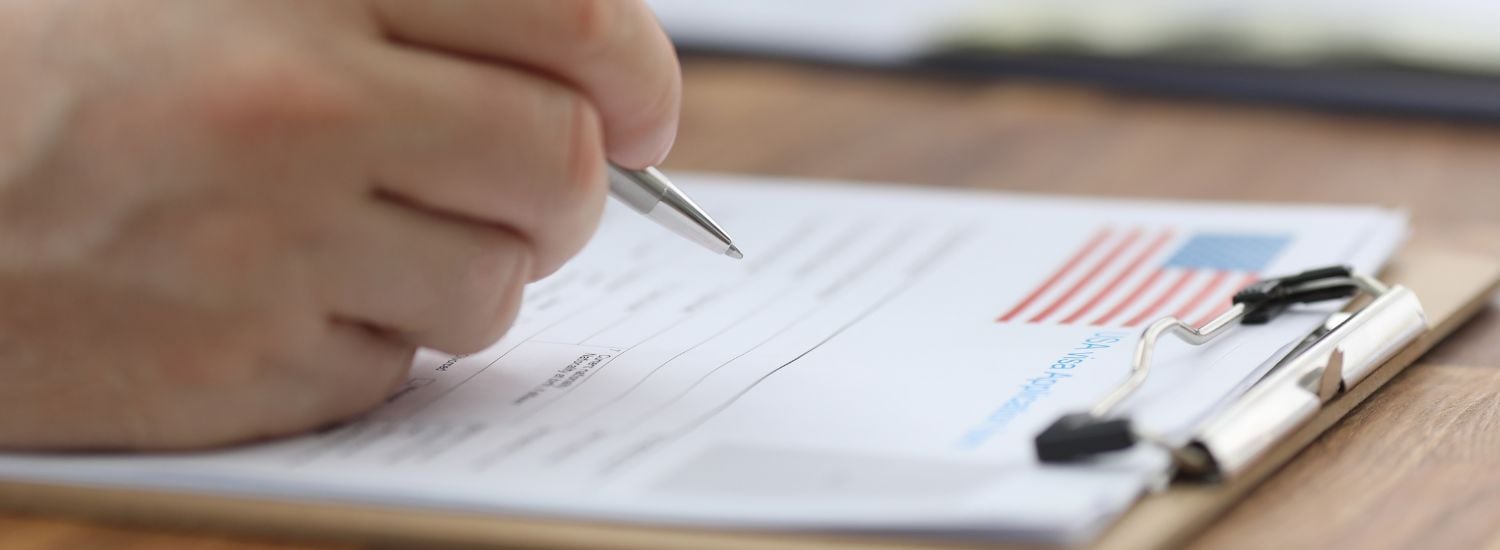
The US immigrant visa process explained
To move to the United States, you must first apply for permission, detailing how long you want to stay and your reason for moving. Be aware that the American visa process is complicated and takes time. Your most likely method of getting a visa is to be sponsored, either by a family member or a US employer.

US visa processing time
US visa processing time and the required application steps depend on the country you currently reside in. If you are outside the US, you must undergo a medical exam. But, if you are already living there as a nonimmigrant, you will not.
If an American company wants to hire you, they will petition the United States Citizenship and Immigration Services (USCIS) on your behalf. If approved, you can live in the US permanently and will receive a green card.
If you don't have an employer willing to sponsor you, you can ask a family member who is a US citizen to do so. They can petition for your stay by completing an I-130 form on your behalf. Priority is given to spouses, parents, and unmarried children under 21. If approved, you will then begin processing in your home country.
How to apply for a work visa in USA
To apply for a work visa in the USA, gather the required documents, complete form DS-160 online, schedule a visa interview, pay the fee, attend an interview, and await processing. For detailed guidance, visit the official U.S. Citizenship and Immigration Services (USCIS) website.
The essential documents you'll need to provide include:
- A valid passport with at least six months remaining
- Birth and marriage certificates
- Employment information
- Your CV
Remember to print the confirmation page, as you must present it during your interview.
The State Department's National Visa Center (NVC) will invite you to an interview once they have processed your application. Please note, depending on which type of visa you have applied for, your wait could be months or even years.
Before your interview, your local embassy will assign you tasks, including a medical exam for immunisations and fingerprints. During the interview, an embassy official will review your application and ask related questions.
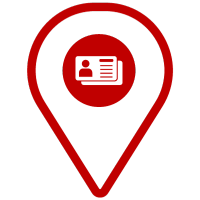
Types of US visa
While an employer or family member sponsorship is your most likely way to gain a visa, there are other options:
- Self-petition visa: if you have remarkable achievements in the arts, sciences, education, business, or athletics, you can apply for a green card via an EB-1 form.
- Nonimmigrant work visa: a temporary visa that allows you to live and work in the US for a specified amount of time. Nonimmigrant visas are for people in specialised occupations that require at least a bachelor's degree or for those with extraordinary ability. Your employer can submit an I-129 form on your behalf.
- Visitor visa: there are two types of US visitor visa — Business (B1) and Tourism (B2). The maximum you can stay is capped at 180 days, but this is at the discretion of the consular officer who interviews you at the US embassy in your country. If you apply for a Tourism Visitor visa, you cannot undertake any form of work.
- Student visa: student visas are categorised as F (university, high school, conservatory, etc.) or M (vocational or non-academic institutions). Ask your school whether you qualify and the USA student visa application process.
Global US visa interview wait times
The graph below shows some estimated waiting times for receiving an interview about a work visa at a U.S. Embassy or Consulate in destinations around the world. Do note these times can change weekly depending on incoming workload and staffing.
Find the complete list on the US Department of State - Bureau of Consular Affairs website.

What is a permanent resident card?
A permanent resident card, or a "Green Card," is an official document issued by the US Citizenship and Immigration Services (USCIS). The USCIS distributes Green Cards to foreign nationals who have been granted lawful permanent stay in the United States. The card is usually green in colour, hence the nickname.
How does a Green Card work?
A Green Card is an identification document that grants expats moving to the United States the right to live and work there permanently. Known officially as a Permanent Resident Card, the US Citizenship and Immigration Services (USCIS) issue Green Cards to foreign nationals who meet specific criteria.
Here's an overview of the process:
- Eligibility: there are various Green Issuance of Green Card categories to apply through, including family-sponsored, employment-sponsored and refugee/asylum status.
- Application approval: once approved by the US Citizenship and Immigration Services (USCIS), the National Visa Center (NVC) receives your case for processing.
- Biometrics and background: USCIS will investigate your background to ensure you meet the eligibility criteria. You will then undergo a series of biometric services, including fingerprinting, a photograph and an interview.
- Issuance of Green Card: if your application is approved, USCIS will issue your Permanent Resident Card. Green Card holders must continue to reside in the US, abide by its laws, and renew their Green Cards before expiration.
- The "five-year rule" for citizenship: after five years of continuous residency, as a Green Card holder, you may be eligible to apply for US citizenship. However, if your spouse is a US citizen and you applied through marriage, you may be able to apply for citizenship within three years.
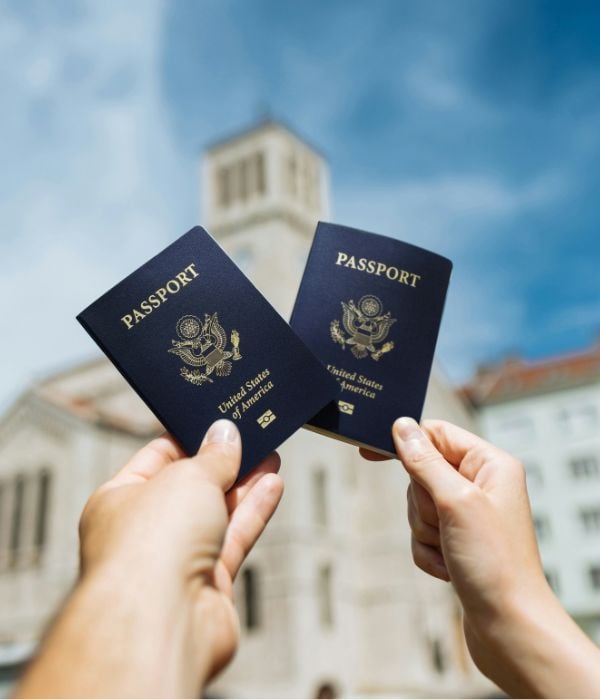

US immigration numbers by year
The graph below shows the number of people who immigrated (in millions) to the United States between 2011 and 2021.
There was a significant dip during the COVID-19 pandemic, but with borders reopening, numbers have risen again.

(Sources: USA Facts)
How long is the Green Card process
The Green Card process takes anywhere between seven and thirty-three months to complete. Wait times depend on your application method, suitability, location of the processing office, demand, unforeseen delays and more.
How much does it cost to apply for a Green Card?
The cost to apply for a Green Card depends on your application method and current processing stage. Some mandatory payments include petitions, applications, support, medical examinations and administration fees.
Please reference the US Citizenship and Immigration Services website for the latest information on fees and the application process.
What is the Green Card Lottery?
The Green Card Lottery, officially known as the American Diversity Immigrant Visa program, hands out up to 55,000 permanent visas annually — but gaining one of these visas depends on luck! Millions apply, so the likelihood of winning is not favourable.
To qualify, you must live in a country with a low emigration rate to the US and have graduated high school or have specific work experience. Entry is free, but if you win, there will be a fee to pay in person at your US Embassy. The list of countries that cannot enter the green card lottery changes yearly based on current immigration levels.
What are K1 visas?
K-1 visas allow a fiancé or fiancée of a US citizen to visit the United States and get married within 90 days of arrival. Once married, the foreign national can apply for permanent residence via a Green Card.
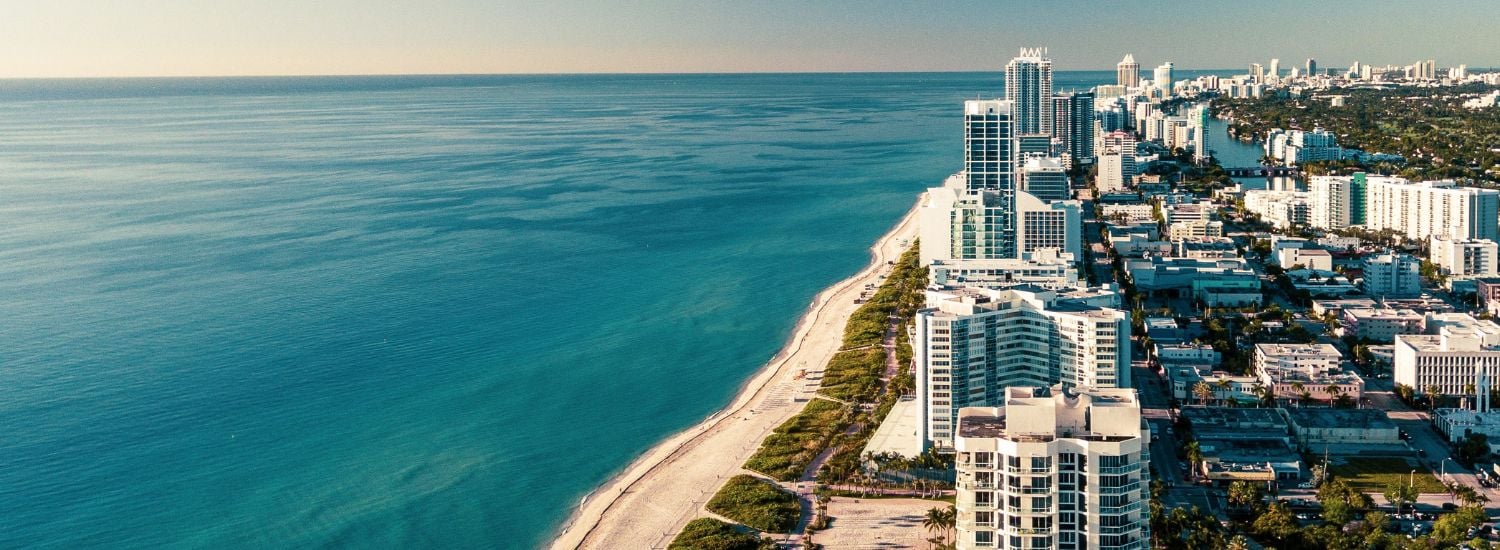
Emigrating to the USA: 10 best cities in America for expats
The United States is a massive country — the third largest in the world! Once your entry is approved, you can live anywhere from the paradise islands of Hawaii to the skier's haven of Alaska. It's no wonder so few Americans own a passport since they can freely roam around fifty unique states.
So, whether the most important thing to you is climate, crime, cost of living or taxation, we take a deep dive into the ten most popular places to live in the US for expats.
![]()
New York City, New York
The Big Apple is full of large expat communities who have made the city their home for centuries. It's a global hub for finance, media and the arts and attracts a yearly influx of ambitious professionals from all over the world.
While there have been significant decreases in crime rates in recent decades, some areas are safer than others, so do your research before moving. New York State is the 10th highest for taxes in the US, with rates ranging from 4% to 10.9%, depending on income, and the city also imposes a local income tax.
Population: 8.74M
Foreign-born population: 36.3%
Avg. annual household income: $111,583
Avg. monthly rent (for a studio): $3,380
Avg. house price: $736,314
Cost of living: 72.5% higher than the US average
Main industries: finance, healthcare, tech and retail
Warmest month: July (avg. high 29°C, avg. low 21°C)
Coldest month: January (avg. high 4°C, avg. low -2°C)
![]()
Los Angeles, California
L.A. is famous for its entertainment industry, which attracts a variety of people from all over the globe, hoping to "make it". It's also home to thriving expat communities, such as Koreatown, Little Tokyo, and Little Armenia.
Like most major cities, crime rates in Los Angeles differ across neighbourhoods. 2019 - 2022 saw an 11% increase in overall crime, with 60 reported incidents per 1000 residents. California has one of the highest state income tax rates in the United States, which varies from 1% to 12.3%, depending on income.
Population: 3.9M
Foreign-born population: 36.2%
Avg. annual household income: $106,931
Avg. monthly rent (for a studio): $2,020
Avg. house price: $923,739
Cost of living: 61.7% higher than the US average
Main industries: entertainment, tech and tourism
Warmest month: August (avg. high 29°C, avg. low 19°C)
Coldest month: January (avg. high 20°C, avg. low 9°C)
![]()
Miami, Florida
The Sunshine State is particularly popular with Latin American expats, including Cubans, Venezuelans and Colombians. The city's rich Latina roots are evident in its cuisine, festivals, and nightlife.
The city experiences varying crime rates across different regions. Safe neighbourhoods in Miami include E.Campus Cir, SW 167th and Kendale Lakes South. Florida is one of the few states in the US with no state-level income tax, just small federal deductions from your paycheck.
Population: 440,807
Foreign-born population: 58.1%
Avg. annual household income: $79,886
Avg. monthly rent (for a studio): $2,250
Avg. house price: $568,926
Cost of living: 18.9% higher than the US average
Main industries: tourism, transport and retail
Warmest month: August (avg. high 32°C, avg. low 26°C)
Coldest month: January (avg. high 24°C, avg. low 17°C)
![]()
San Francisco, California
The Bay Area, which includes Silicon Valley, attracts ambitious professionals worldwide looking to succeed in the technology sector. With artificial intelligence (AI) gaining popularity, immigration numbers will likely increase.
Property crime is a concern in specific neighbourhoods, but violent crime rates are low compared to other major cities. California has one of the lowest and highest state income tax rates in the United States, depending on income.
Population: 865,933
Foreign-born population: 34.1%
Avg. annual household income: $178,742
Avg. monthly rent (for a studio): $2,508
Avg. house price: $1,261,671
Cost of living: 145.5% higher than the US average
Main industries: finance, tech and tourism
Warmest month: September (avg. high 22°C, avg. low 14°C)
Coldest month: January (avg. high 14°C, avg. low 8°C)
![]()
Austin, Texas
The capital of Texas is best known for its live music scene, vibrant arts community and tech startups. The warm climate, picturesque parks, and outdoor activities are a few reasons Austin's population grew by 228k between 2019 and 2022.
Austin generally experiences lower crime rates than other major U.S. cities. But, the city does have an "open carry" law, allowing most residents over 21 to carry a handgun without a license. Texas is one of nine US states with no state-level income tax.
Population: 944,658
Foreign-born population: 18.5%
Avg. annual household income: $111,233
Avg. monthly rent (for a studio): $1,433
Avg. house price: $543,380
Cost of living: 29.1% higher than the US average
Main industries: tech, education and finance
Warmest month: August (avg. high 35°C, avg. low 24°C)
Coldest month: January (avg. high 17°C, avg. low 6°C)
![]()
Chicago, Illinois
Chi-Town is a major financial and business centre which attracts professional expats from across the globe. The cost of living is low compared to other major U.S. cities, like New York City and San Francisco.
Chicago experiences varying crime rates, so research the different areas before committing to a new home. Safe neighbourhoods include Edison Park, Norwood Park and Forest Glen. Illinois has a flat state income tax rate. Regardless of income, all residents pay 4.95% of their salary in state taxes.
Population: 2.74M
Foreign-born population: 20.2%
Avg. annual household income: $100,347
Avg. monthly rent (for a studio): $1,257
Avg. house price: $287,337
Cost of living: 5.7% higher than the US average
Main industries: finance, manufacturing, tech and healthcare
Warmest month: July (avg. high 28°C, avg. low 21°C)
Coldest month: January (avg. high 1°C, avg. low -5°C)
![]()
Washington, D.C.
The nation's capital is home to a large expat community thanks to the presence of foreign embassies and government agencies. While the city's cost of living is high, its walkability and many cultural offerings offset it.
Crime in Washington, D.C. is relatively higher than in other major US cities, so, do some thorough research before choosing your preferred neighbourhood. Income tax rates range from 4% to 10.75%, depending on your salary.
Population: 683,154
Foreign-born population: 13.5%
Avg. annual household income: $138,421
Avg. monthly rent (for a studio): $1,950
Avg. house price: $614,146
Cost of living: 51.9% higher than the US average
Main industries: government, healthcare and tech
Warmest month: July (avg. high 31°C, avg. low 22°C)
Coldest month: January (avg. high 6°C, avg. low -1°C)
![]()
Boston, Massachusetts
Famous for its quality universities and research institutions, Boston attracts students and professionals from around the world. This city's cosmopolitan population, picturesque surroundings and proximity to nature enhance its appeal.
Some areas have higher crime rates than others. Safe neighbourhoods include Winchester, Brookline and Somerville. Massachusetts has a progressive income tax system, with rates varying from 5% to 9% based on salary.
Population: 672,814
Foreign-born population: 28.1%
Avg. annual household income: $120,939
Avg. monthly rent (for a studio): $2,920
Avg. house price: $718,208
Cost of living: 50.8% higher than the US average
Main industries: education, biotech and healthcare
Warmest month: July (avg. high 28°C, avg. low 19°C)
Coldest month: January (avg. high 3°C, avg. low -5°C)
![]()
Dallas, Texas
The Big D's growing international community includes finance, healthcare, and technology professionals. Dallas provides a welcoming environment for expats seeking thriving arts, green spaces and a high quality of life.
Crime rates in Dallas are lower than the national average and have been declining for decades. Texan residents are one of nine US states that enjoy zero income tax at the state level. But, like all states, there are national taxes to consider.
Population: 1.3M
Foreign-born population: 23.8%
Avg. annual household income: $92,785
Avg. monthly rent (for a studio): $1,575
Avg. house price: $306,877
Cost of living: 0.2% higher than the US average
Main industries: finance, telecommunications and tech
Warmest month: August (avg. high 35°C, avg. low 25°C)
Coldest month: January (avg. high 14°C, avg. low 4°C)
![]()
Seattle, Washington
The Emerald City is best known for its tech industry, including large companies like Microsoft and Amazon. While the cost of living is steep, the thriving job market, progressive community, and abundant outdoor activities make it a popular choice for expats.
As a city with a dense population, some areas of Seattle experience higher crime rates than others. Safe-rated neighbourhoods include Ballard, Hawthorne Hills and Matthews Beach. Washington State does not impose a state-level income tax.
Population: 726,054
Foreign-born population: 19.3%
Avg. annual household income: $144,955
Avg. monthly rent (for a studio): $1,395
Avg. house price: $826,592
Cost of living: 58.1% higher than the US average
Main industries: tech, healthcare, manufacturing and engineering
Warmest month: August (avg. high 25°C, avg. low 15°C)
Coldest month: December (avg. high 8°C, avg. low 3°C)
(Sources: renthop.com, zillow.com, bestplaces.net, expatarrivals.com, point2homes.com)
From surfing in crystal-clear waters to exploring lush green landscapes, you'll wonder why you didn't move sooner.
How to move to Hawaii
Hawaii, a dream place to live and work for many, attracts expats thanks to its diverse culture, stunning beaches and welcoming "aloha spirit". From surfing in crystal-clear waters to exploring lush green landscapes, you'll wonder why you didn't move sooner.
Moving to Hawaii from a foreign country includes the same processes as settling in any other US state. However, there are a few essential things to keep in mind:
- Do thorough research: there are over one hundred Hawaiian islands. Familiarise yourself with what's on offer to find a home that suits your lifestyle preferences and employment options.
- Check your finance: as a desirable destination in an isolated island location, the cost of living in Hawaii is higher than the US national average. Several factors contribute to the elevated expenses, including housing, utilities and groceries.
- Set realistic expectations: Hawaii might sometimes feel like paradise, but it's not all heaven on earth. There are traffic issues, crime, corruption and all the daily problems that come with living in any populated Western destination.
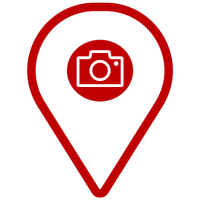
Must-see places in Hawaii
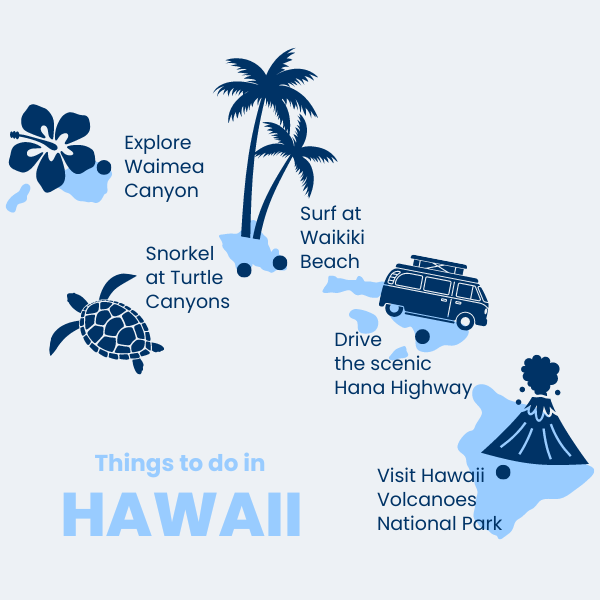
Does Alaska pay you to live there?
As of 2023, the Alaskan government pay eligible residents living in the state $1,312 annually via the Permanent Fund Dividend (PFD). You must reside in Alaska for a full calendar year and leave for no more than a total of 180 days.
In 1976, former governor Jay Hammond introduced the PFD to give the Alaskan people a social wealth fund paid for by oil revenues. The widely popular dividend has helped a large cross-section of the population, including mothers with young children and Native American women.
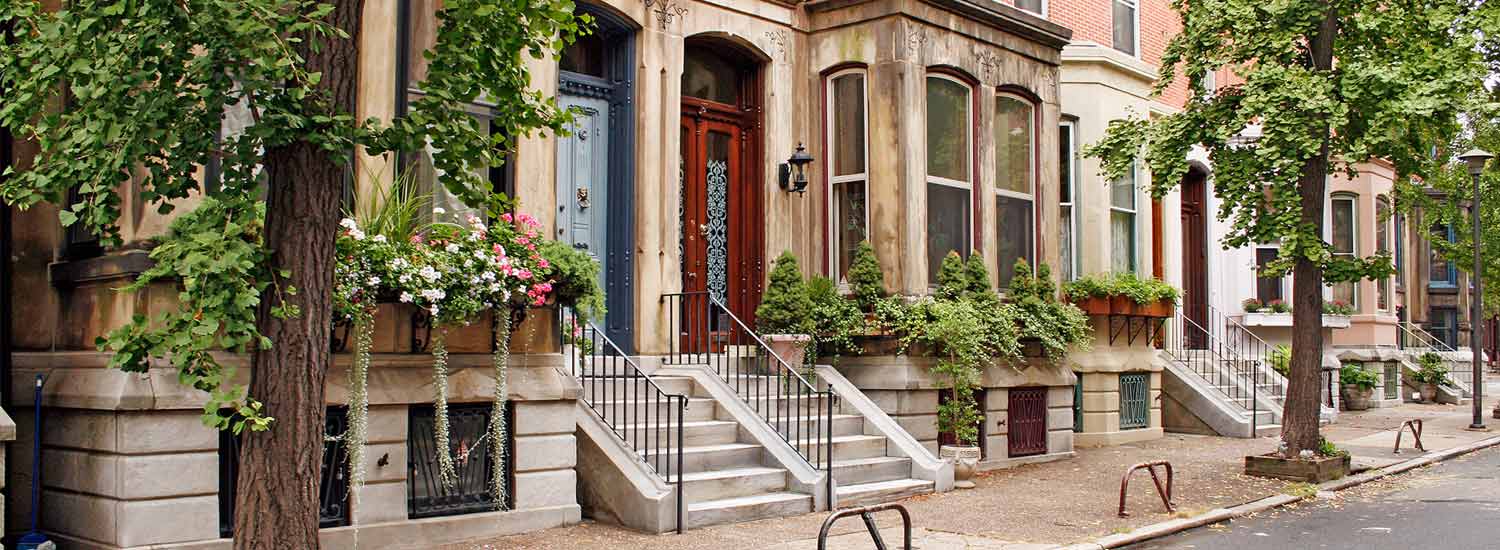
Renting vs. buying a property in the US
Once you've decided on a city or town to move to, you'll need to determine whether buying or renting a home is best. Leasing a property in the States lets you acclimatise to your new surroundings without committing to a large purchase like a house. After all, you might have a change of heart and want to return to your home country or try a different area. Research local hotels and Airbnb rentals to find a temporary place to stay while house hunting.
Another option is hiring a realtor who can use their extensive knowledge of the local area. It can be costly, but it's a welcome relief to have a helping hand on arrival.
Typically, the documents you'll need to provide to rent a property in the US include:
- Personal information such as your name, date of birth, etc.
- Your Social Security number (SSN)
- Your driver's licence number
- Employment details, including proof of income such as a payslip or an employment offer that states your salary
- References
Renting property in America
Before arriving, research your chosen area. Consider prices, how long your work commute will be, schools, crime rates, parks and local amenities. Search online using popular letting sites such as Zillow, Avail, Apartments and Craigslist. But avoid closing on a home based on images and text alone, as there will likely be discoveries when you see it in person. Then, line up as many viewings as possible, leaving enough time to travel between appointments.
Another option is hiring a realtor who can use their extensive knowledge of the local area. It can be costly, but it's a welcome relief to have a helping hand on arrival. Once you've picked a suitable home for you and your family, there's usually a written application you can fill in online.
Before moving in, you must sign a lease (also known as a contract). Typically, leases last for a year and cover your responsibilities as a tenant, such as paying for utilities and whether or not you can have pets. It will also include your landlord's contact details and their duties, like repairing appliances. Read your lease carefully and ask for your own copy. Pay close attention to when your rent is due and how much the security deposit is.
Once you move in, set up utilities in your name, such as electricity, water, gas, internet, and cable. Websites like Powerswitch and Make the Switch can help you determine your cheapest options.
Buying a house in the States
Start by working out your budget and researching US states with the lowest property taxes to ensure you have enough to afford a mortgage. Then, check your credit score on sites like Experian or Credit Karma to determine your likelihood of being accepted. Such valuable resources can suggest adjustments to increase your credit score, improving the mortgage rates banks offer.
Next, apply for a pre-approved mortgage at your bank or local credit union. Doing so gives you a clear idea of what you can afford and your interest rates. Then, search for a licensed real estate agent who can help you find properties within your budget, negotiate offers and guide you through the process.
Once you find a home you love and the seller accepts your offer, hire a professional to assess the property's condition and conduct a title search to ensure there are no ownership issues. If applying for a mortgage, you must make a downpayment (deposit) of 3% to 20% of the house price.
Before closing on a deal, you'll pay various fees, including a down payment, closing costs, and any other expenses associated with the purchase. So, ensure you have enough in the bank to cover these, too!

US property prices: most and least expensive states
Hawaii
$842,908 avg. house value
West Virginia
$158,103 avg. house value
(Source: Zillow Home Value Index)
How to open a US bank account when emigrating to America
To open a US bank account, visit a few banks close to your new home, if they have brick-and-mortar locations, and do some online research. Popular national banks include JPMorgan Chase, Bank of America, Wells Fargo and Citibank.
Checking account: for everyday transactions such as buying groceries and paying bills. Services you can access with this type of account include ATM withdrawals, account transfers, and more.
Savings account: for storing funds to use at a later date. These accounts have higher interest rates than checking accounts, so you can earn more on top of the money you've saved.
You'll need to provide identification such as proof of immigration (visa, green card, etc.), a valid passport and a Social Security number if you have one. Some US banks, such as HSBC and Barclays, operate worldwide. They can help you set up a US account if you already bank with them.
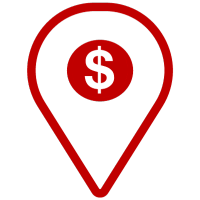
What to do with money when moving to the USA
There are a few options available to transfer your money from outside the US into your new bank account:
- Bank wire transfer: this is where one bank directly transfers money to another bank. The process is secure but could involve high fees.
- Online money transfer: platforms such as PayPal, Wise and Revolut allow you to send money online and often have lower fees than traditional banks.
- Money order or cashier's check: choose this method if you would sooner send your new US bank physical paperwork. It is also typically cheaper!

A land of boundless opportunities: working and getting a job in the United States
With more than nine million vacancies across the US, it's no wonder it's considered one of the best countries to live and work. As an expat looking to settle in the US and get sponsorship from an employer, your best chance of securing a job is an in-demand role.
As long as you have finished high school, there are plenty of high-paying jobs for drivers, technicians, and, with a bit of experience, management roles. There's also good news for those with qualifications. As well as being more likely to receive sponsorship from a US employer, there is always demand for nurses, sales reps and general managers.
Start by researching the US's biggest industries, such as healthcare, education and tourism, and searching for in-demand roles that fit your skills.
How to get a US Social Security number
You need a Social Security number (SSN) to secure a job in the US. If you have a working visa, you can apply for a Social Security card once you arrive in America by going to your local Social Security office — with 12,000 in the country, there's sure to be one nearby! Find the address of your closest office using the Social Security Office Locator.
Take with you a completed SS-5-FS form and the following original documents:
- Proof of birth (birth certificate)
- Immigration status (visa, green card or employer authorisation document)
- Proof of identity (passport)
- Proof of employment (contract offer or HR certificate)
- An I-94 arrival record form
Top tip: take your original documents plus photocopies to speed up the process.
Tips for job hunting in America
Start by researching the US's biggest industries, such as healthcare, education and tourism, and searching for in-demand roles that fit your skills. Utilise job listing websites like Indeed and Monster and connect with potential employers on LinkedIn, a social media platform for professionals. Other job-hunting options include:
- Attending networking events and career fairs
- Checking your desired employer's website for vacancies
- Registering with recruitment agencies
- Cold emailing companies directly with your CV (it's called a resume in the States!)
To stand out from other candidates, tailor your CV to the American job market, write a well-crafted cover letter and highlight your achievements and relevant experience during interviews. Finally, finding employment in the United States requires persistence and resilience — keep searching and sending out applications, and you'll land your dream job in no time.
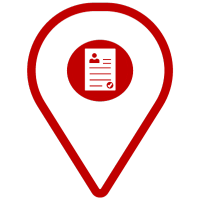
USA employment statistics
| Avg. weekly working hours | 38 |
| Avg. annual income | $54,132 |
| Full-time employed | 134M |
| Part-time employed | 27.3M |
| Vacancies | 9.61M |
(Sources: tradingeconomics.com, y-axis.com)
Top 10 jobs in demand in the USA
The top 10 jobs in demand jobs in the USA are assistant general managers, registered nurses, truck drivers, shift managers, delivery drivers, owner-operator drivers, sales representatives, restaurant managers, dental assistants and direct support professionals, according to Indeed.
However, the American job market is constantly evolving due to changing demographics, technology and societal needs.

How much annual leave do you get in America?
Unlike most countries, US workers are not entitled to paid annual leave. It's at your employer's discretion how many days off you receive. Over three-quarters of companies typically give their employees ten paid days off annually after a year of service. Plus, you can request unpaid time off if needed.

Understanding the American education system
In the United States, children between 5 and 18 must attend school (or receive an education at home). Secure your child's place by contacting your school district's principal office to schedule a meeting to discuss their suitability. To register them, you'll need to provide the following:
- Birth certificate
- Passport
- Immunisation records
- Transcripts from their former schools
Education in the USA includes a mix of public and private institutions and is divided into several levels:
- Preschool: optional schooling for children aged 3 to 4. It's an opportunity for kids to learn basic skills such as socialising and play-based learning.
- Kindergarten: optional schooling for kids aged 5. Children learn foundational skills to prepare for school, like reading, maths and social skills.
- Elementary school (grades 1-5): compulsory schooling for kids aged 5 to 10. The curriculum covers fundamental subjects like maths, science and English language.
- Middle school/junior high (grades 6-8): compulsory schooling for students aged 11 to 13. Children learn a broader curriculum, including foreign languages, arts, and physical education.
- High school (grades 9-12): compulsory schooling until age 16 or 18, depending on individual state laws. Students study a wide range of subjects, including personal choices geared towards their plans for higher education.
An overview of higher education in the USA
With 38% of 18 to 24-year-old Americans attending college and a 50.2% rise in masters degrees as the highest award between 2011 and 2021, competition for the best-paying jobs has never been greater. Admission to higher education varies but may include academic performance, test scores (such as SATs), recommendations, and interviews.
Here are some examples of higher education institutions available to students in the States and what they offer:
- Universities: options include undergraduate, graduate and doctoral courses across various disciplines.
- Colleges: generally, the focus is on four-year undergraduate programs plus limited graduate options.
- Community college: students study two-year associate's degree programs, certificate programs and vocational training. Such colleges are often used as an entry point to degrees elsewhere.
- Trade schools: specialised institutions that focus on specific skills, such as automotive repair, construction or cooking.
These are the types of degrees students can study:
- Associate's degree: a two-year program offered by community colleges and technical schools. The average salary for graduates with an associate's degree is $52,260.
- Bachelor's degree: a four-year program offered by colleges and universities. Upon completion, you'll either receive a Bachelor of Arts (BA) for subjects like theatre, music, literature, etc. or a Bachelor of Science (BS) for computing, medicine, economics, etc. The average salary for graduates with a bachelor's degree is $74,464.
- Master's degree: typically a two-year program following a bachelor's degree. It allows students to focus on a particular subject and often involves a significant research component. The average salary for graduates with a master's degree is $86,372.
- Doctoral degree: the highest level of academic achievement in the US. It includes programs like Doctor of Philosophy (Ph.D.) and professional degrees like Doctor of Medicine (M.D.) or Doctor of Law (J.D.). The average salary for graduates with a doctoral degree is $108,316.
Admission to higher education varies but may include academic performance, test scores (such as SATs), recommendations, and interviews.

Top 4 best colleges in the US
The top 4 best colleges in the US are Stanford University, Mass. Institute of Technology, Harvard University and Princeton University, according to Times Higher Education. Here are more details about each of these renowned institutions:

Stanford University, Stanford, California
World ranking: 2 | Founded: 1885 | Acceptance rate: 4% | Graduation rate: 94% | Tuition fees: $55,473
Stanford University is one of the world's leading private research institutions. It's renowned for its academic excellence and has played a pivotal role in technology development worldwide.
The university offers diverse programs across disciplines such as engineering, humanities, business and medicine. Standford's faculty includes Nobel laureates, Turing Award winners, and other distinguished scholars.

Mass. Institute of Technology, Cambridge, Massachusetts
World ranking: 3 | Founded: 1861 | Acceptance rate: 4% | Graduation rate: 95% | Tuition fees: $55,510
The Massachusetts Institute of Technology (MIT) is one of the world's preeminent scientific, engineering and technology institutions. MIT has earned a reputation for cutting-edge research, innovation and academic rigour.
The university offers a range of undergraduate and graduate programs with an emphasis on STEM fields. MIT's faculty includes Nobel laureates, MacArthur Fellows, and pioneers in their respective disciplines.

Harvard University, Cambridge, Massachusetts
World ranking: 4 | Founded: 1636 | Acceptance rate: 3% | Graduation rate: 97.1% | Tuition fees: $51,143
Harvard University is one of the world's most prestigious higher education institutions. It boasts a rich history and a solid commitment to fostering innovation and intellectual growth.
Harvard offers various undergraduate, graduate, and professional programs with a diverse student body. The university's distinguished alums include Nobel laureates, scholars, politicians, entrepreneurs, and leaders.

Princeton University, Princeton, New Jersey
World ranking: 6 | Founded: 1746 | Acceptance rate: 4.4% | Graduation rate: 97.9% | Tuition fees: $56,010
Princeton University is a renowned Ivy League institution known for its rich academic traditions and stunning Gothic architecture. The university offers various undergraduate and graduate programs, primarily in the liberal arts.
Princeton's commitment to innovation is evident in its state-of-the-art laboratories and libraries. Its most famous faculty members are experts in their fields, fostering a dynamic learning environment.

What you need to know about the US healthcare system
Healthcare in the US doesn't include a government-funded option. Instead, it's a complex mix of public and private providers. Many citizens opt for private healthcare via insurance companies or provided by employers. Insurance plans vary widely in terms of coverage, cost and availability, so shop for the best options.

Types of American health insurance plans
In the United States, there are three main types of healthcare insurance:
- Health Maintenance Organization (HMO):
- Members have access to doctors, hospitals, and healthcare services within a pre-approved network of providers. Treatment outside of this network isn't covered except in emergencies.
- If you need to see a specialist, you must get a referral from your primary care physician (PCP) or approval from your HMO.
- HMOs charge lower monthly premiums and out-of-pocket costs, making them one of the most cost-effective insurance plans.
- Preferred Provider Organization (PPO):
- PPOs are similar to HMOs, except the healthcare provider network is much broader. Plus, members can see specialists without a referral from their primary care doctor and access out-of-network care for a cost.
- PPOs have higher premiums and out-of-pocket costs but offer greater flexibility.
- Exclusive Provider Organization (EPO):
- An EPO care plan combines elements of both HMOs and PPOs. Members don't need to get a referral to see a specialist. However, this type of insurance doesn't cover out-of-network services except in emergencies.
- EPOs are a middle ground between the previous two types of plans, offering slightly more flexibility for a slightly higher cost.
There are several other types of insurance plans, such as Point of Service (POS) and High Deductible Health Plans (HDHPs), and each one has unique features, advantages and limitations, so it's essential to do plenty of research before making your choice.

How to pick a healthcare insurance plan when emigrating to the States
There are several government programs to help those in lower-income families, including Medicaid and the Children's Health Insurance Program (CHIP). In the case of an emergency, hospitals will provide care regardless of insurance status or ability to pay. But, this can be costly if you don't have any form of insurance.
Choosing the right insurance plan is an important decision that requires careful consideration. Here are some key questions to ask when looking for and deciding which US healthcare coverage to opt for:
- What medical services are covered by the plan, and are prescription drugs and preventative screenings included?
- Does the plan cover mental health services and maternity care?
- How are emergency services and hospital stays covered?
- How easy is it to change doctors or specialists within the network?
- Are there waiting periods for specific treatments?
- Will your coverage still be valid if you move to a different state?
Understanding American healthcare insurance can be a headache! If you need help finding the right one to suit your needs, budget, and preferences, consider consulting with a licenced healthcare broker, an agent who uses their in-depth knowledge of the system to provide personalised guidance.
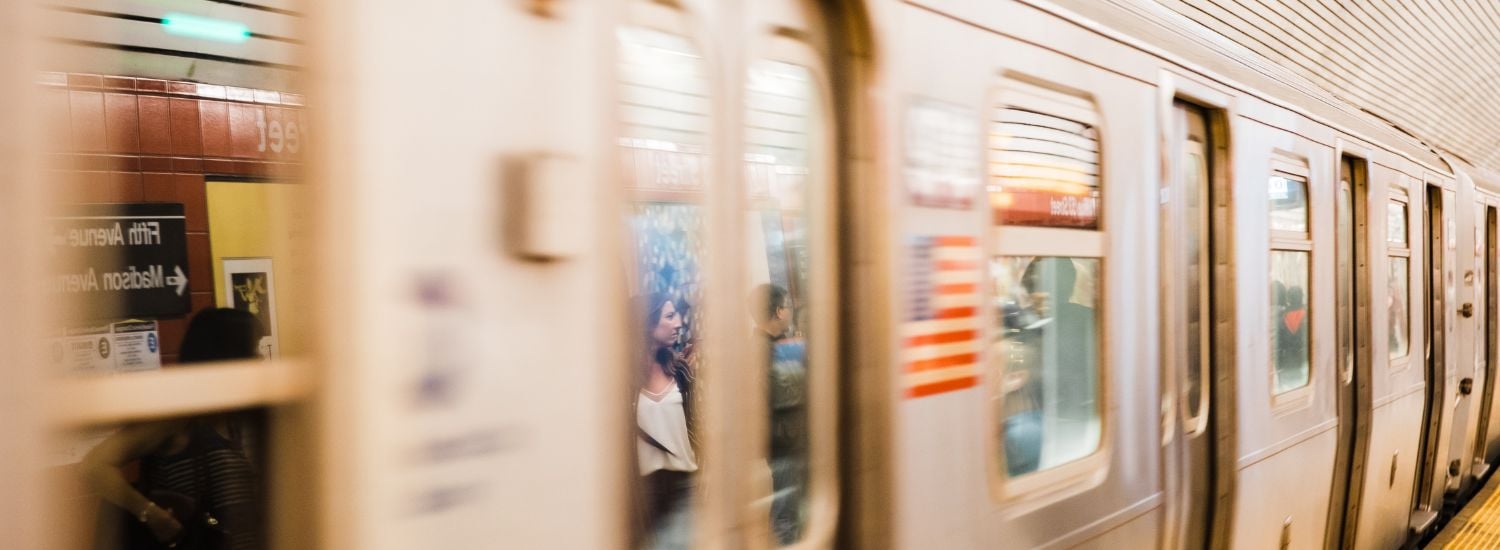
A quick guide to transportation in the US
Prepare yourself for how large the US really is! It's not uncommon to hear people talk about the distance between cities by how many days it takes to travel rather than miles. In fact, the US is so big that some feel there is no need to leave the country, with only 37% of citizens owning a valid passport.
Car travel is widespread, especially in rural states such as Colorado, Maine and Mississippi, where there is less public transport.
The best ways to get around in the USA
Getting from place to place in the US varies due to its vast size and the population of each state, city or town. Public transport options include buses and trains, and in some large urban areas, such as New York City and San Francisco, subways and trams.
Car travel is widespread, especially in rural states such as Colorado, Maine and Mississippi, where there is less public transport. All major cities include airports with international connections and extensive motorways (highways) linking nearby regions.
Depending on the state, you might be able to use the driver's license issued to you in your home country alongside an International Driving Permit for a period of time. However, at some point, you will need to apply for an American licence as a new driver — laws on the application process vary across the country, so thorough research is recommended.
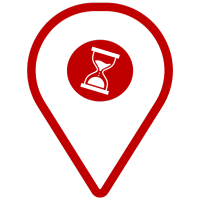
American history timeline
1600s
In 1607, the Jamestown Colony (near present-day Williamsburg, Virginia) became North America's first permanent English settlement. And in 1620, the Pilgrim Fathers joined the settlers, arriving on the Mayflower.
1700s
Increasing unrest over English control led to the American War of Independence (1775–1783). After freeing themselves from British governance, the Declaration of Independence was signed in 1776.
1800s
Simmering tensions between northern (the Union) and southern (the Confederacy) states triggered the American Civil War (1861–1865). Fighting ceased in 1865, resulting in the abolition of slavery in the USA.
1900s
With two world wars, the Great Depression, JFK's assassination, a moon landing, the signing of the Civil Rights Act, the Cuban Missile Crisis and the fall of the Berlin Wall, the 20th century was a busy time for the States!
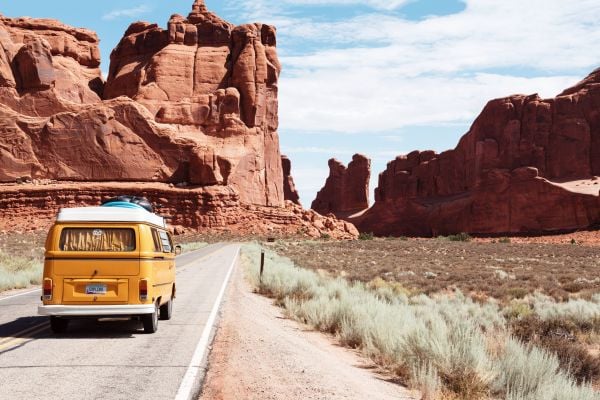
American culture: values, traditions and more!
Depending on the country you're moving from, life in the US might be a bit of a culture shock. Perhaps less so if you're used to living in the UK, Canada or Australia, but there remain significant differences:
- Guns are legal: each state has its own laws on who can and cannot possess a firearm. But, across the country, it's relatively easy to obtain one. Some states, such as Alaska, Idaho and Ohio, have an open carry rule, meaning anyone over 21 can have a gun on their person without a license.
- Get used to the imperial system: while most countries have switched to metric measurements, e.g. metres, kilograms, etc., the US still uses imperial units. Expect to see speed limit signs in miles, maximum baggage amounts in pounds, and heights measured in feet and inches.
- Check your plugs: in the USA, electrical items have one of two plug types, A and B. Plug type A has two flat parallel pins, while plug type B has two flat parallel pins and a grounding pin. You can temporarily use plug converters, but using them for an extended period is unsafe. We recommend replacing your appliances on arrival.
- Americans love the Stars and Stripes: expect to see the US flag raised outside homes, police stations, public buildings and even barber shops! Important holidays include the 4th of July, which celebrates the USA's independence from the British Empire in 1776. Plus, Thanksgiving, which traditionally marked the end of the harvest, but is now more focused on family.
- Embrace multiculturalism: the home of the free and the brave has welcomed immigrants for centuries. As such, the country has a diverse population, which includes people from virtually every corner of the globe. Expect to find a wide range of cultures expressed in everything, from how people talk and dress to music and food.
Top 10 surprising facts about the United States of America
- Americans don't call their home's street level the "ground floor". Instead, it's known as the "first floor".
- Stick shift driving is on the way out, with 96% of Americans today driving automatic cars.
- Almost everyone tips for service (even for a takeaway coffee!), with a gratuity of 20 to 25 per cent on top of the bill (before sales tax) being the standard.
- Although still separated by a distance of 6,604 km, Hawaii is moving closer to Japan at a rate of more than 4 centimetres per year due to tectonic plate shifting.
- The Library of Congress, a domed granite building in the Capitol, Washington D.C., is the largest in the world. It has over 838 miles of shelves, holding more than 38.6 million catalogued books and printed materials in 470 languages.
- Kingda Ka, located at Six Flags Great Adventure in Jackson, New Jersey, is the tallest roller coaster in the world at a head-spinning 139 metres tall and the fastest in North America.
- Montana, a mountainous state in the west of the country, is a vast farming land with three cows for every person!
- The White House, the official residence and workplace of the President of the United States, has 132 rooms (including 35 bathrooms!) over six levels, separated by 412 doors and detailed by 147 windows and 28 fireplaces.
- Americans have a talent for creating buildings out of unusual materials! Don't miss the Paper House in Rockport, Massachusetts, built from glued-together old newspapers, Texas's Beer Can House, made from aluminium cans and green bottles, and the Corn Palace in South Dakota, an a-maize-ing attraction constructed entirely from grain.
- The US is a nation of pet lovers — there are now more dogs than children under 18 years old.
The home of the free and the brave has welcomed immigrants for centuries...
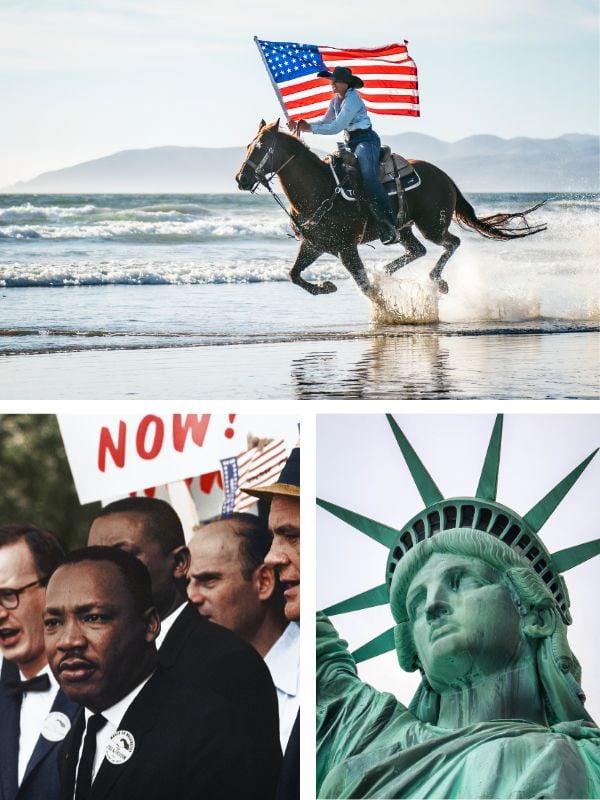
Top 4 must-see US landmarks
Now that you and your family are fully-fledged Americans, you have all the time in the world to explore this intriguing country! Millions worldwide flock to the State's staggering landmarks yearly. So, we've compiled the best of the best:
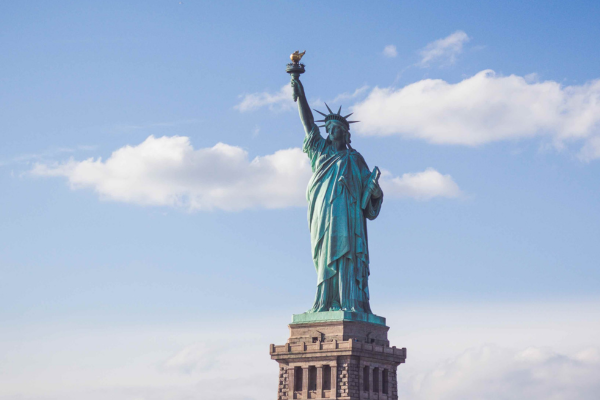
1. Statue of Liberty, New York
The Statue of Liberty is an instantly recognisable symbol of freedom and democracy. It was a gift from France to the United States on the 28th of October, 1886 and stands at a height of 93 metres from the base to the tip.
Lady Liberty holds a torch in her right hand and a tablet inscribed with the date of the American Declaration of Independence on her left. She wears a flowing robe and a crown with seven spikes, representing the seven seas and continents of the world.
Take a ferry across the Hudson River to Liberty Island to explore the statue's pedestal and museum, which includes exhibits on its history.
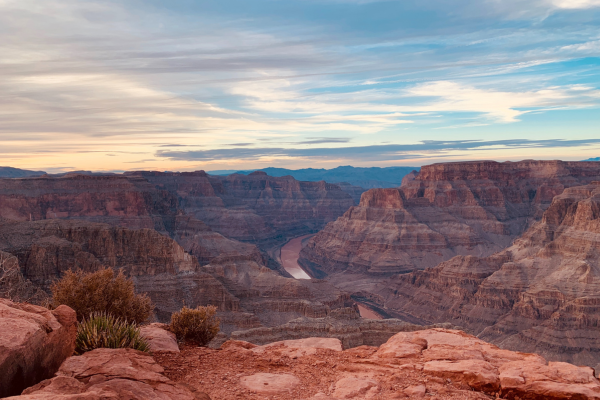
2. The Grand Canyon, Arizona
The Grand Canyon is one of the world's most renowned geological wonders. Carved naturally by the Colorado River over millions of years, it spans 277 miles in length, over 1 mile deep, and varies in width from 4 to 18 miles.
The canyon's layered rock formations chronicle Earth's geological past over billions of years. Explore the natural spectacle through hiking trails and scenic overlooks, or embark on rafting expeditions along the Colorado River.
The Grand Canyon welcomes over five million people annually, making it one of the most visited national parks in the United States, and it can be explored by car, on foot or riding a pack mule!

3. Hollywood Sign, Los Angeles
The Hollywood Sign is an iconic landmark of Tinseltown! It consists of thirteen towering white letters, each standing 13.7 metres tall, and spans a total length of 107 metres.
The sign was constructed in 1923 as a real estate development advertisement but soon evolved into a symbol of the American film industry.
Hike or take a bus up Mount Lee to enjoy stunning 360° views of Los Angeles and its surrounding area. The sign is not open to the public, but there are nearby vantage points where visitors can capture memorable photographs.
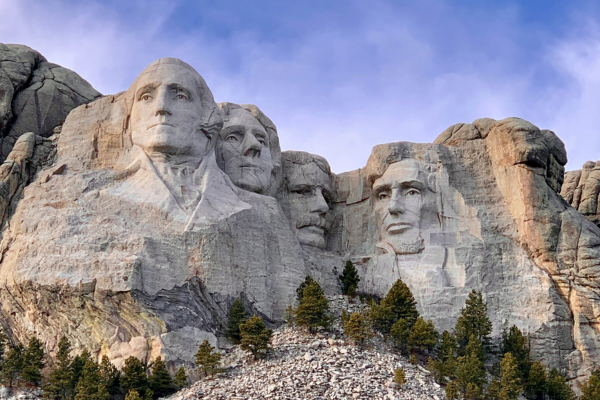
4. Mount Rushmore, South Dakota
Mount Rushmore National Memorial is one of the most visited landmarks in the world. It features four colossal heads of U.S. presidents, George Washington, Thomas Jefferson, Theodore Roosevelt and Abraham Lincoln, carved into the granite face of Mount Rushmore.
Sculpted by Gutzon Borglum and later completed by his son, Lincoln, the project lasted from 1927 to 1941. The memorial symbolises the founding, growth, preservation, and development of the United States.
Enjoy educational exhibits, a visitor centre, scenic walking trails and "TJ's" vanilla ice cream, based on Thomas Jefferson's original recipe from 1780.

How to move belongings and furniture to the United States
Seven Seas Worldwide have been safely shipping home removals worldwide for over 25 years. From Michigan to Mississippi, we'll transport your household belongings wherever you settle in the US! Our expert team, free packing supplies, complimentary storage and multilingual customer service, support you at each step.
Another benefit of using our international removals company is that we handle the customs process.
What is the MoveCube® moving pod?
You can ship household goods using our secure moving pod, the MoveCube®. It acts as your very own shipping container, ready to be filled by you with furniture, boxes, bikes, musical instruments and more. Don't forget to declutter before you pack!
With each MoveCube® order using our removals to USA service, you'll receive a free Starter Pack to help box your belongings. Inside, you'll find a measuring tape, a box cutter knife, a marker pen, a roll of parcel tape, and a tape dispenser. Plus, three plastic floor sheets so you can determine what you can load inside a Large, Medium or Small MoveCube®.
You can order as many MoveCubes® as needed, depending on the size of your home. Please note: if you order more than one MoveCube®, they may arrive on separate days. Start your exciting journey to the US today with a free instant quote, which includes a transparent cost breakdown of each step.
Another benefit of using our international removals company is that we handle the customs process. However, there are a few things you should be aware of when shipping to the US:
- Like all countries, the States has a list of items banned from importation to protect its people and environment. Check our Prohibited Goods page before packing to avoid delays or fines.
- You must be present in the United States when your household items arrive.
- Complete all online documents and ensure your inventory accurately matches what you have packed.
- Upload scans of the shipment owner's passport clearly showing the picture and signature pages.
For a full breakdown of the customs process in the US, including duty-free rules, read our Importing into the USA page.
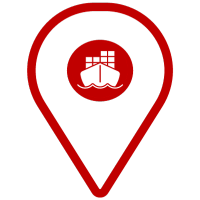
Transit times for shipping to the USA
Estimated transit times for transporting one Large MoveCube® by sea from the capital city of our ten most popular routes to Washington, D.C. in the US:
| Origin country | Transit time* |
| Australia | 87 days |
| China | 78 days |
| Hong Kong | 67 days |
| Ireland | 135 days |
| Malaysia | 98 days |
| New Zealand | 113 days |
| Singapore | 98 days |
| South Africa | 132 days |
| Thailand | 77 days |
| UK | 108 days |
*estimated timings dependent on global shipping circumstances.

What is a 3299 form?
A 3299 form helps the U.S. Customs and Border Protection (CBP) determine that the items you are importing comply with American customs laws and regulations. Similar to the UK's Transfer of Residence (ToR1) form, it's a legal requirement when shipping unaccompanied used personal goods not for resale that arrive at a different time than you. Or if you are moving to the US permanently. Typical goods include household furniture, clothing and sports equipment.
It's sometimes called the Declaration for Free Entry of Unaccompanied Articles.
A CBP form 3299 is easier to complete than it might seem at first. There are seven sections, three of which you can leave blank:
- Part 1: the importer's basic information, including name, DOB, arrival date and their address in the States.
- Part 2: statement of eligibility for free entry of articles, indicating whether the imported goods are used or for sale.
- Part 3: for U.S. Army personnel and evacuees only, leave blank.
- Part 4: a detailed list of everything you're importing, describing all effects, including their respective value.
- Part 5: carrier's certificate and release order, leave blank.
- Part 6: certification for persons seeking free entry, put an "X" next to "B" as the importer.
- Part 7: CBP use only, leave blank.
Failure to complete your CBP 3299 form accurately could lead to fines, delays, or even confiscation of your goods. Please visit the official U.S. Customs and Border Protection website for the most up-to-date information.
How many people immigrate to the US every year?
In 2021, over
1.5m people moved to the US
(Source: USA Facts)
FAQs about moving to America
Animals entering the US are subject to regulation by USDA APHIS and other federal agencies. Generally, your pet must be microchipped, vaccinated and fit to travel. However, there may be additional requirements depending on the state you're moving to and the animal you wish to take with you.
For more information, including specific conditions for dogs, cats, birds and ferrets, please reference the Department of Agriculture's Animal and Plant Health Inspection Service.
While moving to the USA without a job is possible, you must meet specific criteria and have sufficient funds available for your stay to be eligible.
However, employer sponsorship is the easiest way to get a visa to live in the US. Other options include being sponsored by a family member or spouse. Fast-growing job roles in the US include nurses, wind turbine technicians, security analysts, software developers and statisticians.
Moving to the United States is relatively straightforward, but depending on your circumstances, it can take time, so patience is vital! For example, if an employer in the US sponsors you for an in-demand role, your visa application might get fast-tracked. However, there's a significant demand for entry to the US, so you could be waiting months or years.
Another option is applying for the Diversity Visa Program (also known as the Green Card Lottery). While the odds of winning are low, your chances are better if you arrive from a country with low immigration and have completed high school or have suitable work experience.
The US has expats from hundreds of countries living in all 50 states of this diverse and welcoming country. But, the highest concentration of immigrants is on the east and west coasts: Washington D.C. and New York, and San Francisco and Los Angeles.
When moving to USA, it's important to understand the legal requirements and practical aspects of relocation. Familiarise yourself with the American immigration process and how to obtain the necessary visas or permits. Research health insurance policies, financial systems, and educational opportunities to ensure a smooth transition. And be aware of the country's diverse cultural landscape and open to embracing the unique experiences that come with living in the United States.
The USA visa processing time varies depending on the type of visa and the specific circumstances of each application. Other factors impacting the wait include the volume of applications in process at the U.S. Citizenship and Immigration Services (USCIS), staffing allocations and policy changes.
To apply for a work visa in USA, find a visa suitable to your requirements, then contact your nearest American embassy or apply online via the United States Government website. Ensure a smooth application process by thoroughly preparing documentation, including proof of employment, qualifications, and required forms. Pay particular attention to your application fees, which cost several hundred dollars and are non-refundable.
The Green Card Lottery, officially known as the Diversity Visa (DV) Lottery, is a US government program that provides a chance for individuals from countries with low rates of immigration to the United States to obtain permanent residency or a green card. Participants must enter the lottery during the specified registration period, and winners are selected through a random computer-generated drawing.
Choosing the best city in America for expats depends on individual preferences, career opportunities, and lifestyle. Cities like New York, San Francisco, and Los Angeles offer diverse cultural experiences and job prospects but have a higher cost of living. Alternatively, cities like Chicago and Dallas provide a vibrant cultural scene and are more affordable.
The most and least expensive states in the US are Hawaii, where house prices cost, on average, $842,908 and West Virginia, where you can buy property for around $158,103.
To open a US bank account as a non-resident, you must visit your local branch with the required documentation, including a valid passport, visa, and proof of address. Online account opening is also becoming more common, allowing for remote applications.
To get a US Social Security Number (SSN), you must be a non-citizen authorized to work in America. Complete the required application form (SS-5) and submit it at your local Social Security Administration (SSA) office, providing necessary documents such as a valid visa, passport, and proof of work eligibility. Some visa categories may require additional documentation.
The top 10 in-demand jobs in the USA are assistant general managers, nurses, truck drivers, shift managers, delivery drivers, owner-operated drivers, sales representatives, restaurant managers, dental assistants and direct support professionals.
The amount of annual leave you get in America varies widely based on the employer, industry and employment contract. Unlike some countries that mandate a set number of vacation days, the US has no federal law requiring employers to provide paid vacation. Typically, employees negotiate their leave terms as part of their employment agreement, and the average vacation time can range from 10 to 20 days per year, often increasing with years of service.
The top 4 universities in the United States are Stanford University, Mass. Institute of Technology (MIT), Harvard University and Princeton University.
Common types of American health insurance plans include Health Maintenance Organization (HMO), Preferred Provider Organization (PPO), Exclusive Provider Organization (EPO), and Point of Service (POS) plans. Each plan differs regarding network flexibility, out-of-pocket costs, and the need for referrals.

Extra resources to help with your move to the US
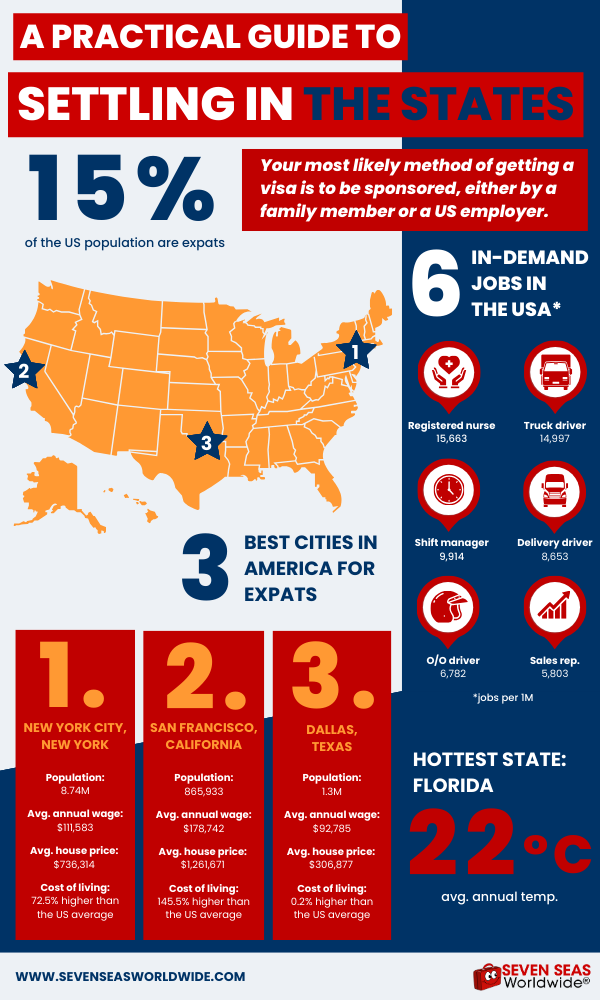
...points to consider before picking a moving location include the expat population, crime rate, climate and cost of living.
Moving to America checklist
Simplify your big relocation to the United States using this handy checklist:
- Discuss the move with family, friends and other expats: before getting swept up in the excitement of moving to a new country, consider the pros and cons of living in the US.
- Research US visas: learn about the visa application process and choose your most likely acceptance method.
- Visit the States and choose an area to settle in: whether you opt for the remoteness of the American outback or the bustle of a big city, points to consider before picking a moving location include the expat population, crime rate, climate and cost of living.
- Decide whether to rent or buy: instead of immediately investing in a property, it's wise to give yourself time to acclimatise to the move by renting first.
- Organise your finances: open a bank account in the USA and transfer money from your origin country.
- Secure a job in the States: gain an understanding of the US employment system, including how to get a Social Security number (SSN) and in-demand roles.
- Arrange your children's education: enrol your little ones in a suitable school unless you plan to teach them at home.
- Get up to speed on the US healthcare system: consider using an insurance broker to find the best policy for you and your family.
- Ensure you have a valid driving licence: check the driving regulations in your state and what public transport is available in the local area.
- Read up on American history: gain a better understanding of this fascinating country by learning about the US's culture and values, including its foundation, gun laws and multiculturalism.
- Book removals to the US: choose a trusted international shipping company to transport all your household belongings to your new home safely.
- Create a list of must-visit sites: now you're living in the United States, plan the attractions you want to see on your next domestic holiday.


